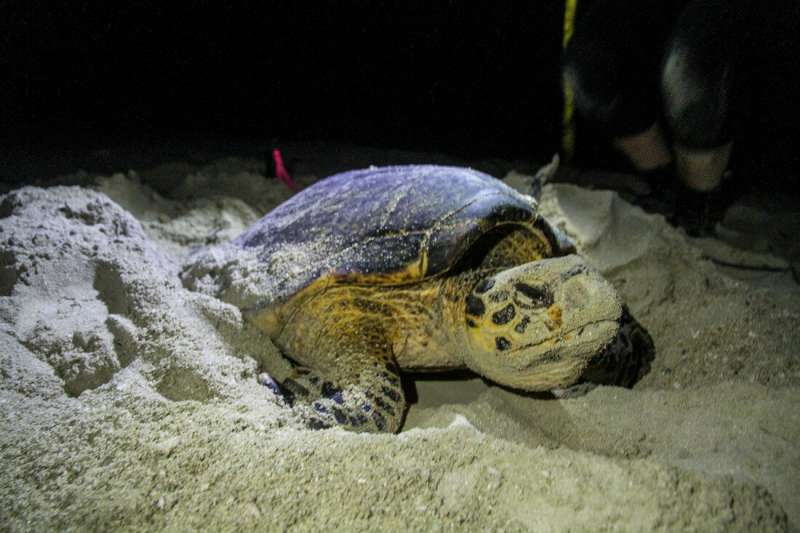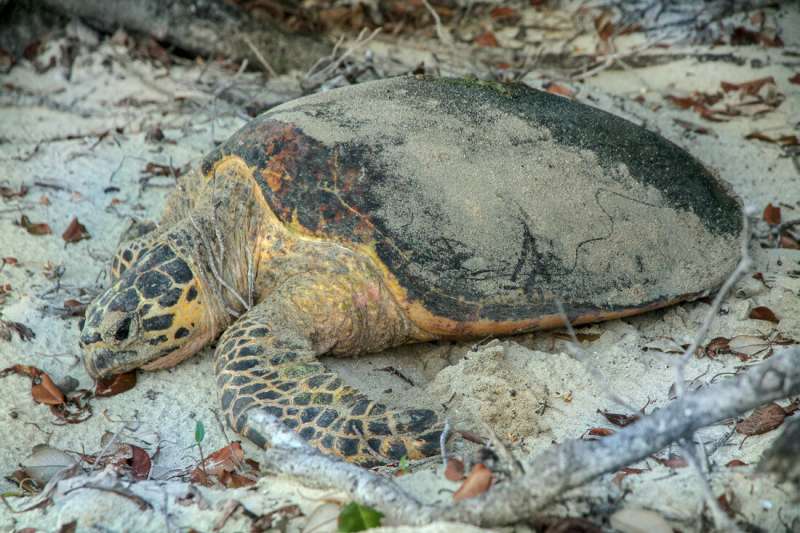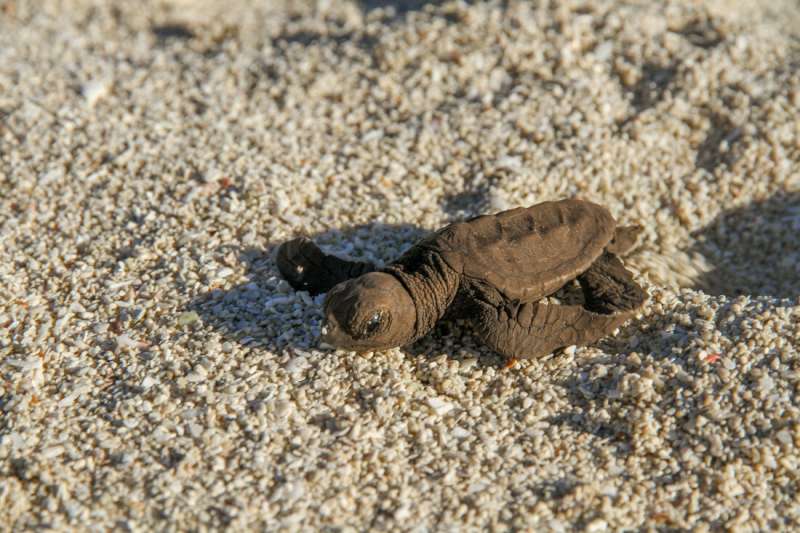Totally cool turtles may help save species

A trial of ways to cool turtle nests is underway in Queensland's Far North as global warming threatens turtle populations throughout the tropics.
Researchers from The University of Queensland and WWF Australia are testing techniques including cooling a small number of nests nightly with sea water, and shading others with structures made from palm fronds.
UQ researcher Melissa Staines said the project was prompted by research indicating that more than 99 per cent of juvenile green turtles in the feeding grounds of the northern Great Barrier Reef stock were female.
"The science is saying that hotter sand, linked to climate change, is to blame and this is causing concern for the future of that population," she said.
"In the Far North, nest temperatures above 29.1 degrees Celsius generate mostly females, while sand temperatures above 34 degrees Celsius are fatal."
Data loggers buried in the trial nests will indicate whether temperatures were kept cool enough to produce a healthy ratio of males and will be compared to a control nest left in full sun.
Queensland government scientists have monitored green and hawksbill turtle nesting on Milman Island since 1990 in one of the longest running monitoring projects in the western Pacific.
The tiny island was chosen so that researchers could test cooling methods on the nests of both species and because it was a suitable location to test shade structures.
"On Raine Island, 120 kilometres south, the large numbers of green turtles coming ashore each night would knock over any shade structures," Ms Staines said.
"There are an estimated 200,000 female green turtles in the northern Great Barrier Reef stock, and up to 90 per cent of those females nest on Raine Island or surrounding cays.
"If our project is successful, cooling techniques could be trialled on Raine Island – the largest green turtle rookery in the world."

A shade structure made from palm fronds and drift wood could be an alternative cooling method for islands that lack the resources to build an irrigation system or have no access to shade cloth and other materials.
"Every single sea turtle I meet is completely different to the last, and that's what keeps you going, knowing that these species—they need you," Ms Staines said.
"That's why I'm here specifically looking into a management strategy that could potentially be used to save future generations of sea turtles all around the world."

Provided by University of Queensland


















